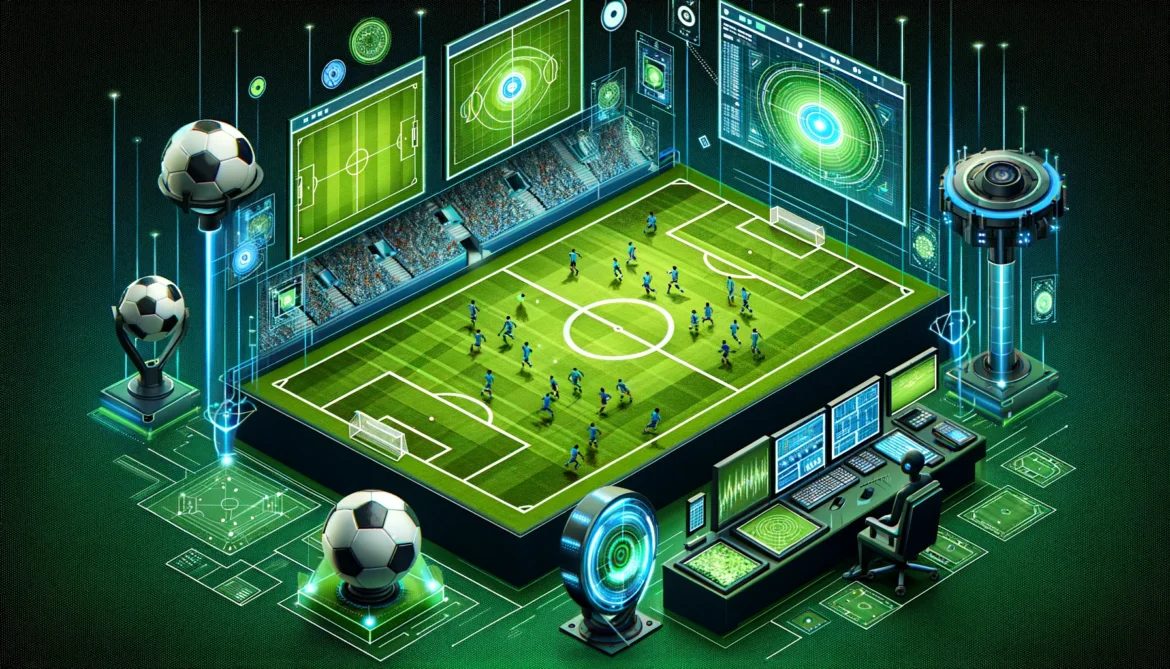Table of Contents
Technological innovations have redefined the way in which games are conducted and administered in the world of sports. However, one of the most important novelties is the Hawk-Eye system, which is considered to be very accurate and effective, especially in football. This article provides the reader a better understanding of the technology by explaining the parts that makeup Hawk-Eye, how it works, and the effects that it brings to the game, whether you are watching the sport of football in a live stadium or via live streamed tournaments online, Hawk-Eye will likely be playing its part in the action.
The Genesis of Hawk-Eye
The development of Hawk-Eye did not start in football but in cricket since tracking the speed of fast-moving balls became quite crucial. It was later introduced in tennis, and the positive result achieved in the game made it possible to introduce it into football. The system was intended to provide a clear second opinion in situations where human eyes could fail to see the difference.
The Hawk-Eye Mechanics
In its basic form, Hawk-Eye employs several high frame rate cameras that are strategically positioned around the stadium, usually mounted to capture views of the playing area from different angles. In football especially, these cameras are placed at the goal line and other sensitive regions on the pitch. The cameras send the data to a central control unit, which uses complex mathematical models to calculate the precise location of the ball.
It involves converting the video frames into individual frames and then estimating the 3D position of the ball in each of the frames. The beauty of it is that by linking all of these positions together, Hawk-Eye can create a very accurate path of the ball. This trajectory data helps in decision making especially in cases of split second decisions during a match.
More Technical Specifics
Hawk-Eye systems are built from cameras that record video at speeds between 500 and 600 frames per second. The high frame rate is crucial when it comes to capturing the quick motions, which are characteristic of football and most professional sports, and where balls are likely to move at high velocities. This software then processes these frames, with the help of model-based vision techniques, to estimate the location of the ball accurately. The Hawk-Eye technology is very precise in that it can calculate the position of the ball to an accuracy of a few millimeters; a key aspect of a game where a few inches can alter the outcome of the game.
Hawk-Eye In Action
Once Hawk-Eye determines the position of the ball, it sends this information almost concurrently to the referees. For instance, in cases such as ball placement across the goal line, the system generates an instant notification to the officials’ wristbands. This constant communication helps maintain the continuity of the game to a great extent, not allowing football to lose its inherent rhythm and intensity.
It is also used in football where pre-match calibration is also performed to determine the efficiency of Hawk-Eye during the match. Technicians then set each camera, and several tests are performed to ensure that the system is ready for action in actual match situations.
Impact on the Game
The use of Hawk-Eye system has made football more transparent and fair compared to the previous systems that were in place. Issues that in the past might have led to debates are solved based on clear and concise visual information. This has not only assisted in minimizing the pressure exerted on referees but also assisted in maintaining the credibility of the game. This is beneficial for the players and the fans because they can be sure that the decisions made on the field are correct most of the time and there will be fewer arguments.
However, the system has not been without criticism as this article seeks to explain. Critics have complained that no matter how advanced technology may be, it is not supposed to intrude into the human factor of the game. Some of them argue that the element of risk and randomness, as well as human mistakes are what make football such an exciting sport. This has also led to some criticism from fans of football, who want the game to remain as traditional as possible.
Future Prospects
On the same note, Hawk-Eye technology has the following potential benefits in the future. Innovations could also bring about better tracking systems that could aid the referees not only in Goal-line technology but also in very many other challenging issues like offsides and fouls. Furthermore, with the advancement of technology, it opens possibilities for the inclusion of technology in coaching and training methods that may give teams a competitive edge in terms of understanding the strategies in a game and the performance of each player.
Conclusion
The use of Hawk-Eye in football is not simply an application of technology; it is a revolution that reaches to the very core of the sport. This system does not just capture events on the field of play; it also symbolizes the principle of fair play that is inherent in sports. In providing accurate and instant decisions on key instances, Hawk-Eye minimizes the flaws of human decision making and the controversies which may detract from the spirit of the sporting event. It has contributed to its capacity to define game results with unerring precision and has not only reinforced the trust in the officiating process by players and fans but has also safeguarded the credibility of the outcomes in the sport.
FAQ
What is the Hawk-Eye system in football?
Hawk-Eye is a computer vision system used in football to track the ball’s trajectory and assist referees in making accurate decisions. It is primarily used for goal-line technology and video assistant referee (VAR) decisions.
How does Hawk-Eye technology work?
Hawk-Eye uses multiple high-speed cameras positioned around the stadium to track the ball’s movement in real-time. The data from these cameras is processed to create a 3D representation of the ball’s trajectory, helping referees make precise calls.
What sports first used Hawk-Eye technology?
Hawk-Eye technology was first implemented in tennis and cricket before being adapted for use in football. Its success in providing accurate line-calling and decision-making led to its adoption in other sports.
How accurate is the Hawk-Eye system in football?
The Hawk-Eye system is extremely accurate, with a margin of error as small as 3.6 millimeters. This precision ensures that decisions, such as whether the ball has crossed the goal line, are made with a high degree of confidence.
What are the key components of the Hawk-Eye system?
The main components of Hawk-Eye include:
- High-speed cameras placed around the stadium
- Data processing units to analyze camera feeds
- Software algorithms to









